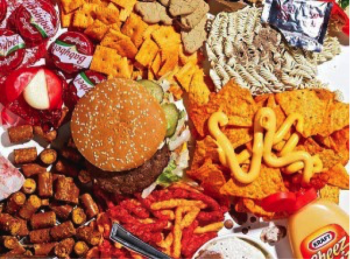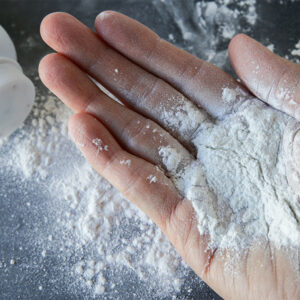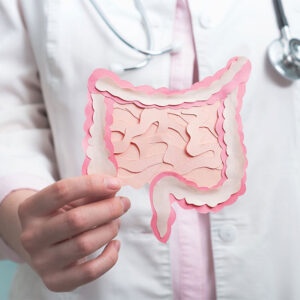
Ultra-Processed: The Sweet, Sad Truth About The American Diet
- Clean these foods out of your pantry!
- Sugar, sugar everywhere, but not a nutrient in sight
- The American diet: overfed and undernourished.
Dear Reader,
What did you have for breakfast?
There’s a good chance you may have taken a bite out of a once-frozen waffle or spooned down some cereal as you got your morning started — well, if you ate your breakfast in America, that is.
In fact, it’s more like a great chance.
New evidence taken from America’s largest health survey, the National Health and Nutrition Examination Survey (NHANES), finds that Americans are getting a staggering amount of their calories from ultra-processed food sources.
But the bad news just keeps coming from this study.
As it turns out, all of this ultra-processed food is responsible for almost the entire amount of the additional sugar that clogs up the American dietscape. And it’s making our country unhealthy.
Today, we will provide you some examples of what these foods are and what they can do to your body.
First, let’s break down the study.
![]() Ultra-gross
Ultra-gross
The study, from the University of São Paulo and Tufts University, was published in BMJ Open last week.
Data taken from the NHANES let researches examine the dietary habits of over 9,000 people.
After analyzing this information, they discovered 58 percent of the participants’ diets consisted of ultra-processed foods.
In addition, they found that 30 percent of the participants’ calories were coming from minimally processed foods. Processed but not ultra-processed foods made up 9.4 percent. Lastly, 3 percent consisted of “processed culinary ingredients,” like salt, oils, and sugar.
“Processed” foods are different from “ultra-processed foods.”
Let’s break it down…
Per the FDA, a food is “fresh” when it’s been recently harvested. However, I should mention, the FDA also allows foods that have been drenched in pesticides and coated in preservatives to be called “fresh.”
Minimually processed foods are things like frozen vegetables, pastas, eggs, and some meats.
Processed foods include items such as canned foods, cheese, breads, and even wine.
However, for the purposes of this study, the researchers were concerned with foods that are ultra-processed.
They define them as:
Formulations of several ingredients which, besides salt, sugar, oils, and fats, include food substances not used in culinary preparations, in particular, flavors, colors, sweeteners, emulsifiers, and other additives used to imitate sensorial qualities of unprocessed or minimally processed foods and their culinary preparations or to disguise undesirable qualities of the final product.1
Yum.
They also include examples: “Ultra-processed foods include mass-produced soft drinks; sweet or savory packaged snacks; confectionery and desserts; packaged baked goods; chicken/fish nuggets and other reconstituted meat products; instant noodles and soups.” 1

The building blocks of many Americans.
Photo credit: middleagemusclegain.com
But it’s these ultra-processed foods that are accounting for just about all of massive amounts of sugars we are eating — 90 percent, to be exact.
![]() Sickeningly Sweet
Sickeningly Sweet
The study found that one of every five calories in the average ultra-processed food product is due to sugar.
The 2015–2020 U.S. Dietary Guidelines and the World Health Organization both recommend that added sugars make up 10 percent or less of your daily caloric intake.
Only people who ate within the lowest 20 percent of the ultra-processed food range were in the 10 percent range for their average daily added sugar intake.
The 80 percent of those who ate the most ultra-processed foods blew right past the 10 percent limit.
As you may already know, added sugars can cause many health issues, including diabetes, obesity, tooth decay, risk of heart disease, and cancer.2
They suggest one of the main issues with the American diet is that sugar-laden, ultra-processed foods are replacing “more-nutrient-dense foods.” Because of this, Americans are “simultaneously overfed and undernourished.” 2
In conclusion of the study, the researchers suggest the obvious: The best way for you to cut out this added sugar is to reduce your intake of ultra-processed foods.
If you have any special ways to avoid processed foods you would like to share, please do!
Nmoore@lfb.org
Live well,

Natalie Moore
Managing editor, Living Well Daily
Sources
[1] ‘Ultra-processed’ foods make up more than half of all calories in US diet
Written By Natalie Moore
Natalie Moore is a dedicated health researcher with a passion for finding healthy, natural, and science-based solutions. After a decade of direct healthcare experience in western and natural medicine, she was involved in public health research before joining Living Well Daily.
View More Free Articles
The Secret Ingredient to a Longer, Happier Life
Let’s face it. We’re all in need of an attitude adjustment from time to time. After all, when you turn on the news these days, the world can seem pretty dark. That is unless you make it a practice to look for the silver linings. In fact, Harvard researchers say when you do, something quite...
Do You REALLY Need All Those Skincare Products?
I often get questions about skincare products—and here’s what I’ve learned. In today’s beauty-obsessed world, it’s easy to fall into the trap of spending hundreds every month believing you need countless products to fight aging and achieve healthy, glowing skin. However, many dermatologists argue that LESS is MORE when it comes to skincare. Simplifying your...
“Ebb and Flow” Technique TRANSFORMS Senior Brain Health
You know by now that exercise is good for you. It keeps your heart healthy, your muscles strong, and your waistline trim. But what if I told you that a trendy “ebb and flow” workout technique—often associated with young fitness enthusiasts—could actually be a game-changer for us “oldsters” when it comes to brain health? And...
Mailbag: Slash Your Risk of Bone Fractures as You Age
“My doctor recently told me that I have osteoporosis. What can I do to reduce my risk of fractures and maintain strong bones as I age?” – Margaret Hi Margaret, Sorry to hear about your diagnosis. I’m sure it was a shock. Osteoporosis is a serious condition that affects millions of people, and it’s not...
Household Favorite EXPOSED as Cancer Risk?
We all want to believe that the products we use daily are safe. After all, if they weren’t, they wouldn’t be on store shelves, right? Well, I hate to break it to you, but sometimes, the truth is far more alarming than we’d like to admit. The World Health Organization (WHO) has just dropped a...
Hidden Heatwave Threat REVEALED
Heat waves can have serious consequences. After all, staying cool isn’t just a comfort issue. When the mercury soars, it threatens your health—especially when you’re a senior. There are various reasons for this, including chronic medical conditions and bodies that just don’t regulate temperature as well as they once did. But there’s another heat-linked threat...
The Hidden Threat Behind Your Achy Joints
Picture this… You’re trying to enjoy a leisurely stroll in the park, but each step sends a jolt of pain through your knee. Or maybe you’re attempting to open a stubborn jar lid, only to have your fingers refuse to cooperate, leaving you feeling frustrated and helpless. Perhaps you’re simply trying to get out of...
Parkinson's Signs You Can't Afford to Miss
Imagine waking up one day to find your body betraying you. Your hands tremble as you try to button your shirt. Your feet shuffle when you want to walk with purpose. Once strong and clear, your voice now barely reaches above a whisper. This is the reality for those living with Parkinson’s. But what if...
Do Protein Needs Drop with Age? The SURPRISING Answer
I had a patient ask me the other day if they needed as much protein now as when they were younger. After all, we aren’t quite as active as seniors compared to when we were spring chickens. It’s a good question. And the answer might surprise you… Remember when you could devour a whole pizza...
Follow Your “Gut Feeling” to Reduce Diabetes Risk
It seems like every day we learn something new about the incredible influence our gut has on our overall health. From mood to immunity, and even to how well we sleep, the community of microbes in our digestive tract is pulling the strings behind the scenes. So, it should come as no surprise that researchers...









